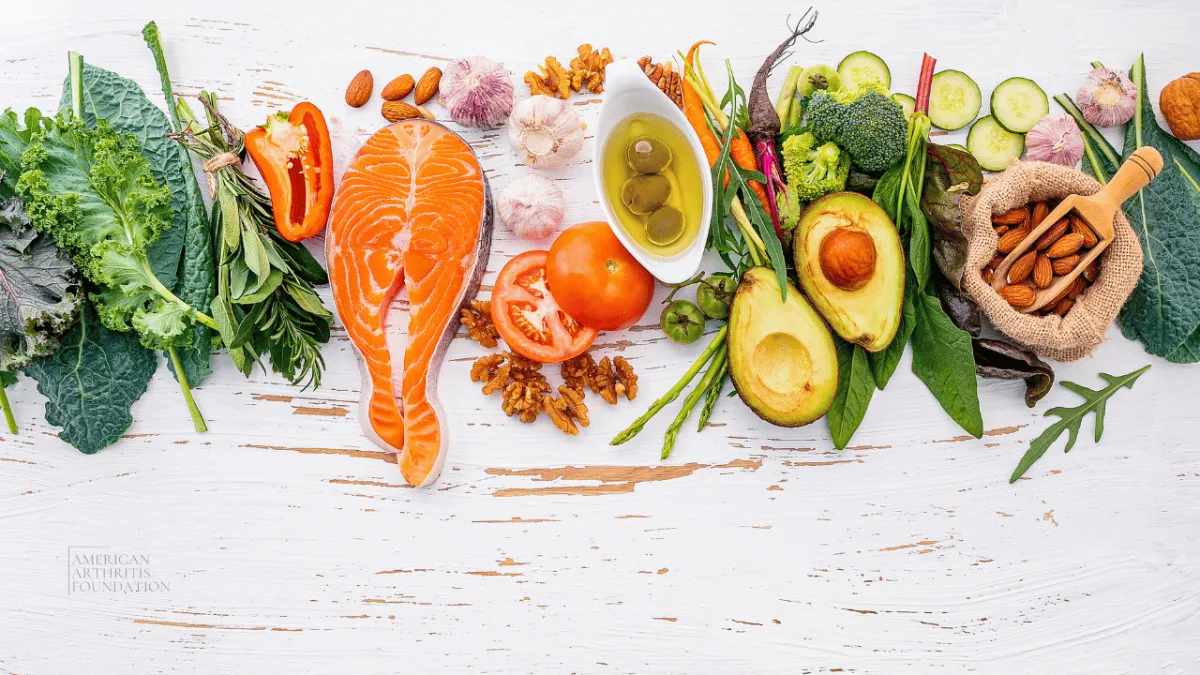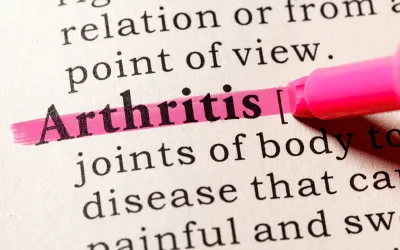About Arthritis
As the nation’s #1 cause of disability, arthritis affects nearly 60 million adults and 300,000 children. Over 100 types of arthritis and related conditions damage the joints and often other organs.
How can we assist you?
Helpful Tools for You

Taming the Gout Beast
If you've ever experienced a gout attack, you know it's unlike any other pain. One minute you're fine, the next your big toe feels like it's being crushed in a vise while simultaneously set on fire. Gout affects over 9 million Americans, and it's not just about eating too much rich food—though diet definitely plays a role.
Gout happens when uric acid crystals form needle-sharp deposits in your joints, most commonly in your big toe, ankle, or knee. Think of it as your body's chemistry experiment gone wrong. While genetics load the gun, lifestyle factors often pull the trigger. The attacks can be excruciating, but here's the empowering truth: gout is one of the most preventable and manageable forms of arthritis.
Unlike other types of arthritis that gradually worsen over time, gout gives you clear warning signs and responds remarkably well to targeted lifestyle changes. With the right approach, many people can dramatically reduce their attack frequency—or eliminate them entirely.
1. Master the Low-Purine Food Game
Why it works
A 2023 systematic review found that following a low-purine diet reduced gout attack frequency by 60% and lowered uric acid levels by an average of 15% within 12 weeks. Foods high in purines break down into uric acid, so reducing them gives your kidneys a fighting chance to clear excess levels.
Action steps • Limit red meat and organ meats to no more than once weekly—choose chicken, fish, or plant proteins instead • Cut back on high-purine seafood like sardines, anchovies, and mussels, but salmon and tuna in moderation are fine • Reduce or eliminate beer and spirits—they're particularly problematic for uric acid levels • Load up on low-purine foods: eggs, dairy, most vegetables, whole grains, and cherries
Yokose C. Dietary Management of Gout: A Systematic Review. Arthritis & Rheumatism. 2023.
2. Hydrate Like Your Joints Depend on It (Because They Do)
Why it works
Proper hydration helps your kidneys flush out uric acid more effectively. Research shows that people who drink 8 or more glasses of water daily have a 40% lower risk of gout attacks compared to those drinking less than 4 glasses daily.
Action steps • Aim for at least 8-10 glasses of water daily—more if you're active or live in a hot climate • Start each morning with a large glass of water before coffee or breakfast • Keep a water bottle visible on your desk as a visual reminder to sip throughout the day • Add lemon slices or cucumber for flavor if plain water feels boring—avoid sugary drinks that can raise uric acid
Choi HK. Water Intake and Risk of Recurrent Gout Attacks. American Journal of Epidemiology. 2022.
3. Embrace the Power of Tart Cherries
Why it works
Tart cherries contain natural compounds called anthocyanins that reduce inflammation and help lower uric acid levels. A 2022 clinical trial found that consuming tart cherry juice daily reduced gout attack risk by 35% over six months compared to placebo.
Action steps • Drink 8 ounces of unsweetened tart cherry juice daily, or take 480mg of tart cherry extract capsules • Add frozen tart cherries to smoothies, oatmeal, or yogurt—they're available year-round and budget-friendly • Time your cherry intake strategically: have some at the first sign of joint discomfort • Look for "tart" or "sour" cherries specifically—sweet cherries don't have the same effect
Zhang Y. Tart Cherry Juice in the Prevention of Gout Flares: A Randomized Controlled Trial. Arthritis Care & Research. 2022.
4. Move Your Body to Move Uric Acid Out
Why it works
Regular exercise helps your body process and eliminate uric acid more efficiently while also supporting healthy weight management. A 2023 study found that people who exercised 150 minutes weekly had 25% fewer gout attacks and lower baseline uric acid levels.
Action steps • Start with 20-30 minutes of walking daily—it's gentle on joints and highly effective for uric acid management • Add strength training twice weekly using bodyweight exercises or light weights • Choose low-impact activities during active gout periods: swimming, cycling, or yoga • Avoid intense exercise during an acute attack, but gentle movement can actually help reduce stiffness
Singh JA. Physical Activity and Gout Risk: A Systematic Review and Meta-Analysis. Journal of Rheumatology. 2023.
5. Manage Your Weight (Even Small Changes Matter)
Why it works
Excess weight increases uric acid production and decreases kidney efficiency at clearing it. Research shows that losing just 10-15 pounds can reduce gout attack frequency by 40% and lower uric acid levels significantly.
Action steps • Focus on gradual weight loss of 1-2 pounds per week—rapid weight loss can actually trigger gout attacks • Use smaller plates and bowls to naturally control portion sizes without feeling deprived • Fill half your plate with vegetables, one-quarter with lean protein, and one-quarter with whole grains • Track your food intake for one week to identify patterns and potential trigger foods
Yokose C. Weight Management and Gout: A Systematic Review of Clinical Outcomes. Obesity Reviews. 2022.
6. Get Strategic About Stress and Sleep
Why it works
Chronic stress and poor sleep both increase inflammation and can trigger gout attacks. A 2023 study found that people practicing stress management techniques had 30% fewer gout flares and better overall pain management.
Action steps • Establish a consistent sleep schedule—aim for 7-9 hours nightly and go to bed at the same time • Practice deep breathing when stressed: inhale for 4 counts, hold for 4, exhale for 6 • Limit caffeine after 2 PM and create a relaxing bedtime routine to improve sleep quality • Consider gentle yoga or tai chi, which combine movement, stress reduction, and joint health
Lee SJ. Stress, Sleep, and Gout Flares: A Prospective Cohort Study. Arthritis Research & Therapy. 2023.
Your Gout-Prevention Quick-Start Plan
This Week: • Cut alcohol consumption in half • Drink 8 glasses of water daily • Add tart cherry juice to your morning routine
This Month: • Replace one red meat meal weekly with chicken or fish • Start a 20-minute daily walking habit • Track potential food triggers in a simple journal
Ongoing: • Maintain gradual weight loss if needed • Monitor uric acid levels with your doctor • Build stress management into your routine
You Have More Control Than You Think
Gout might feel like a lightning bolt that strikes without warning, but the truth is, you have significant power to prevent future attacks. Unlike many chronic conditions, gout responds remarkably well to lifestyle changes—often better than medication alone.
The key is consistency, not perfection. You don't have to overhaul your entire life overnight. Pick one or two strategies that feel manageable and build from there. Many people find that small, sustainable changes lead to dramatic improvements in their attack frequency and overall quality of life.
Remember, these lifestyle approaches work best alongside—not instead of—medical treatment. Work with your healthcare provider to monitor your uric acid levels and adjust your prevention plan as needed.
Every glass of water, every healthy meal choice, and every step you take is an investment in pain-free days ahead. Your future self will thank you for starting today.

Effects of Arthritis

Cause of Disability
In the United States, 23% of all adults, or more than 54 million people, have arthritis. It is a leading cause of work disability, with annual costs for medical care and lost earnings of $303.5 billion.

Workforce Effects
Sixty percent of US adults with arthritis are of working age (18 to 64 years). Arthritis can limit the type of work they are able to do or keep them from working at all.

Global Impact
In fact, 8 million working-age adults report that their ability to work is limited because of their arthritis. For example, they may have a hard time climbing stairs or walking from a parking deck to their workplace.
Promoting Interventions That Reduce Arthritis Pain
American Arthritis Foundation recognizes several proven approaches to reduce arthritis symptoms:
Be active. Physical activity—such as walking, bicycling, and swimming—decreases arthritis pain and improves function, mood, and quality of life. Adults with arthritis should move more and sit less throughout the day. Getting at least 150 minutes of moderate-intensity physical activity each week is recommended.
Protect your joints. People can help prevent osteoarthritis by avoiding activities that are more likely to cause joint injuries.
Talk with a doctor. Recommendations from health care providers can motivate people to be physically active and join a self-management education program. Should your arthritis be interfering with your activities of daily living you may be a candidate to receive many new treatments, and learn how to reverse the arthritis condition.


